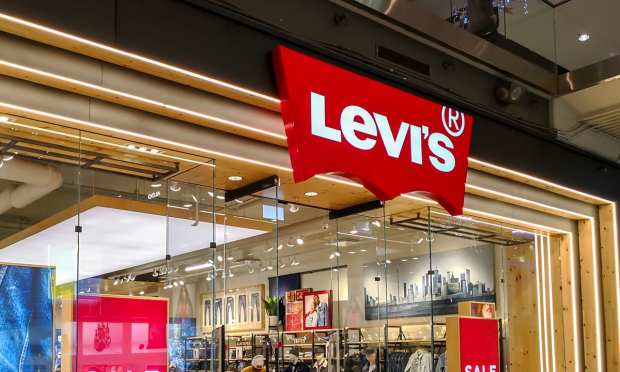Levi’s Adding Stores, Sees First-Half Sales Up 25 Pct On Rising Digital And D2C

Apparel giant Levi Strauss said it sees its first-half revenues rebounding 25 percent and plans to open new stores to take advantage of a “commercial real estate tsunami” that has led to record-high mall vacancy rates.
This as the world’s largest maker and retailer of denim pants said its first-quarter sales fell 13 percent to $1.3 billion, while its global digital revenue grew 41 percent and accounted for more than one-fourth of its sales, up from 16 percent a year ago.
The 170-year-old San Francisco-based company said its adjusted earnings slid 15 percent to $0.34 per share as pandemic-related foot traffic reductions and ongoing closures of company-operated and third-party retail locations crimped business for the three months ending Feb. 28.
Both the top and bottom line results were ahead of analysts’ and the company’s expectations.
“We’ve started the year strong, beating our internal expectations even as we are lapping a particularly good quarter in the prior year,” said Levi’s CEO Chip Bergh, citing a faster-than-expected recovery in the business. “We continue to lean into our strategies — leading with our brands, investing in direct-to-consumer and diversifying our business — while still operating prudently to manage the ongoing uncertainty, especially in Europe.”
Emerging Stronger
Even though roughly 40 percent of Levi’s European stores are still currently closed, it predicts that the return of “consumer excitement” as the global vaccine rollout continues will deliver its forecast first-half gains.
“I am more confident than ever that we will emerge from the pandemic a stronger business and drive sustainable, profitable growth,” Bergh said, telling investors on the company’s earnings call that an increasing share of consumer demand continues to be fulfilled by the omnichannel capabilities it rolled out in the past year, including ship from store, buy online, pickup in-store (BOPIS) and two-day shipping.
“We initially launched these [digital services] in the U.S. and are now expanding them globally,” Bergh said, adding that the efforts cater to how younger consumers are shopping.
“We’re just scratching the surface and as these omni-channel capabilities scale they’re becoming increasingly more meaningful,” he said.
Specifically, Levi’s said its loyalty program membership increased by 35 percent last quarter and now has more than 5 million members globally, while revenue from its mobile app were exceeding expectations and delivering month-over-month growth.
“We are reaching a younger consumer who is engaging with us more times per month and longer per visit,” Bergh said, without providing more specifics.
Looking Ahead
For the six months ending May 30, Levi’s raised its first-half sales outlook to growth of 24 to 25 percent, with earnings of up to $0.42 per share, assuming there is “no significant worsening of the COVID-19 pandemic or dramatic incremental closure of global economies.”
In an appearance on CNBC Thursday (April 8), Bergh said the company planned on adding to its domestic footprint of stores and outlets to not only aid in the growth of its direct-to-consumer (D2C) business but to also seize upon the present upheaval in the retail real estate sector.
“That represents a huge opportunity especially with the commercial real estate tsunami that is happening right now,” Bergh said in the televised interview. “It gives us an opportunity to secure great locations at great leases and we’re capitalizing on that.”
As much as the past year has presented unprecedented challenges, it has also seen Levi’s shares nearly triple, from a pandemic trough of $9 per share a year ago to more than $25 today, a move that has lifted its market value to more than $10 billion.
Levi’s said it currently does business in 110 countries through a global network of 3,000 retail locations, shop-in-shops and department stores.
